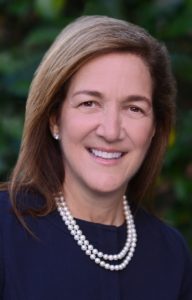
By Andrea Feirstein

Each day for the next 19 years 10,000 baby boomers will retire. According to the Census Bureau, the population age 65 and over in 2030 is projected to be more than 74 million, representing more than 20 percent of the total population. One of the greatest financial challenges facing our nation today is that more than half of households age 55 and older lack retirement savings in either a defined contribution savings plan or an Individual Retirement Account (IRA), and Social Security provides most of the retirement income for about half of households age 65 and older.
Today, more than half of all private sector employees do not have access to retirement savings programs through their employer. Many small businesses do not provide retirement programs either because the cost is too high or the resource burden is too great for a small company. As a result, many private sector employees are left without access to the simplest ways to save for retirement and thus end up not taking any steps to begin saving on their own.
Given the potential future costs presented by this retirement savings gap, many state governments have begun to explore state-sponsored initiatives for private sector employees. Over the last three years, at least 30 states have introduced legislation to either establish a state-sponsored retirement option or to study the feasibility of doing so, and six states have actually enacted legislation intended to expand accessibility and effectiveness of retirement savings for private sector workers. These state-led initiatives are consistent with the role the public sector has played in tackling other savings challenges, most notably the need to save for higher education, and the creation more than twenty years ago of prepaid tuition plans, the forerunner of today’s $260 billion Section 529 industry.
Most recently, the California Secure Choice Retirement Savings Investment Board received a Final Report from its feasibility consulting team indicating that a streamlined operational model, with a single recordkeeper, would be the most effective way to operate its state-sponsored retirement system. In light of the operational similarity to Section 529 plans, a closer examination of the development of Section 529 qualified tuition programs and the growth of the college savings market will show the parallels and lessons for federal and state policymakers to address today’s retirement savings challenges.
- States as Policy Leaders. States first created tax advantaged vehicles for higher education to help moderate-income families make college more affordable at a time of rampant tuition inflation. The states accomplished this by allowing families to save for future tuition costs at near-current rates. States were viewed as the appropriate level of government to most effectively and successfully address this challenge in light of their natural roles in public higher education. Without the federal government filling the tuition savings gap, states stepped in, just as they now contemplate doing so for private sector employees lacking employer-provided retirement plans.
- Existing Operational Frameworks. Almost every state had a student loan authority or other higher education services organization, the main focus for which was making college affordable and attainable. With a mission toward financing higher education, these entities – many of which had State Treasurers as Board members or Board Chairs – lent themselves automatically to oversight and management of college savings programs, including administrative operations, customer service and consumer outreach. State-run pension systems or similarly structured entities that offer separate accounts for pooled investments and related services would provide a similar framework for state-supported private sector pension initiatives.
- Investment and Risk Management Experience. When first establishing prepaid tuition plans, the state authorities relied upon internal investment expertise gained, most often, from professionally managed, pooled investments for defined benefit public pension plans. The similarities in structure and risk management were striking and thus state college savings entities were able to draw upon internal experts alongside nationally recognized independent advisors such as actuaries and investment consultants. The investment management expertise currently in place for public pension systems and college savings plans will provide a ready-made analytic framework for state-sponsored private sector retirement plans.
- Highlighting the Federal Challenges. With well-developed prepaid plans offered only in a handful of states and significant federal tax challenges, the federal government provided the legislative and regulatory relief needed to propel the adoption of state-sponsored college savings plans across the nation. Federal tax advantages, coupled with additional state incentives, enhanced the visibility of and consequent demand for Section 529 college savings plans. As we now see, the federal government is clarifying ERISA rules for state-sponsored private sector retirement initiatives in order to help drive similar growth.
With these four parallels in mind, we believe that as states evaluate state-sponsored retirement options for private sector workers, the 529 college savings industry demonstrates that states can be very successful administering and managing savings tools for private sector workers.
Andrea Feirstein is the founder and Managing Director of AKF Consulting Group, a New York City-based municipal advisory firm that provides strategic advice to State administrators of Section 529 and 529A Plans. Since its inception, AKF Consulting has advised thirty four public sector administrators across thirty two states nationwide. Her clients today represent more than $130 billion in Section 529 assets under management.
April 2016, 16-2
Additional Resources:
- Andrea Feirstein, Managing Director, AKF Consulting Group. “529 College Savings Plans: Lessons Learned for State Sponsored Retirement Initiatives,” Presentation to the Connecticut Retirement Security Board, October 16, 2015.
- Stanley Zeto, Deputy Executive Director, Scholarshare Investment Board. “Scholarshare College Savings Plan,” Presentation to the California Secure Choice Retirement Investment Board, August 24, 2015.
